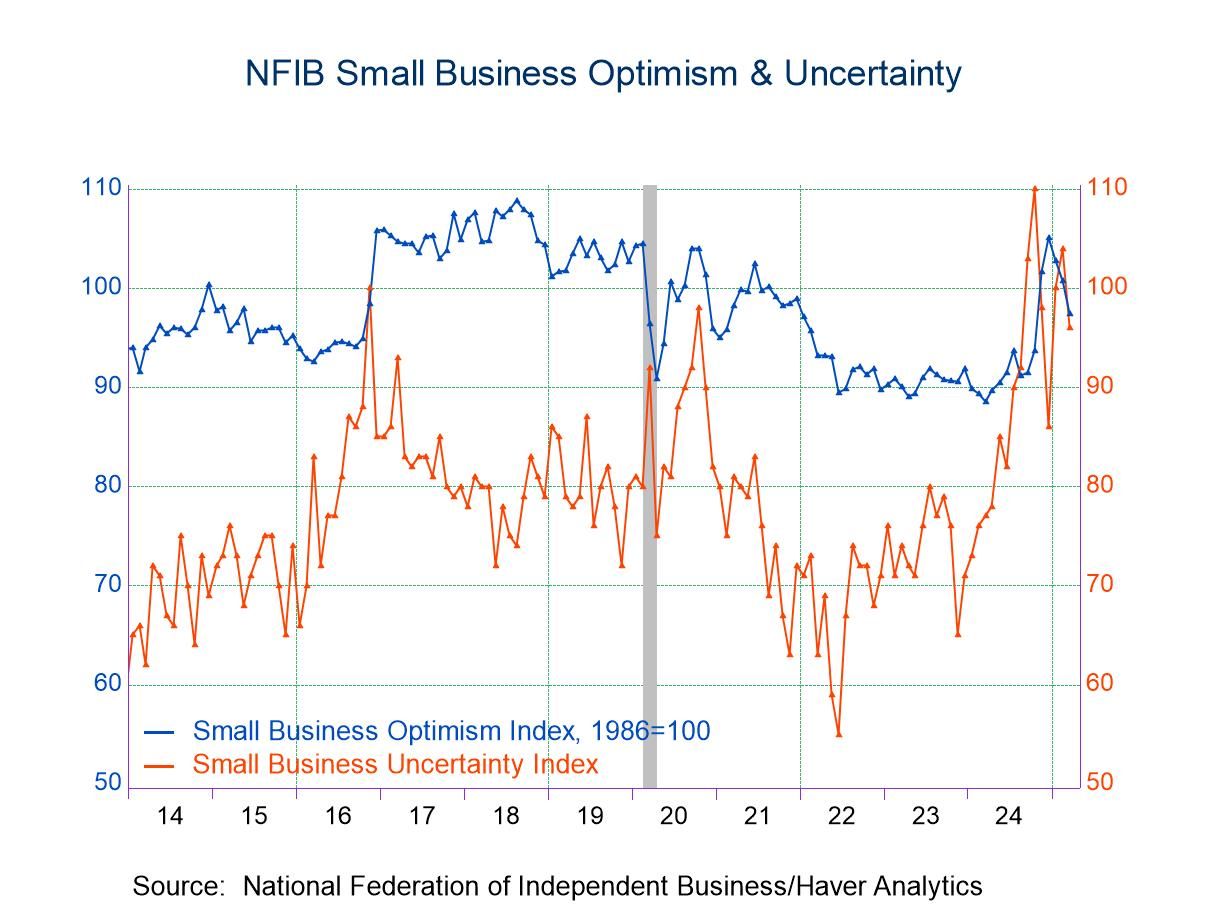 Global| Aug 26 2020
Global| Aug 26 2020State Coincident Indexes in July
Summary
The Federal Reserve Bank of Philadelphia's state coincident indexes were generally strong in July. 45 states report gains since April (the map on the site, which charts the range of 3-month gains, is now a sea of blue. A few months [...]
The Federal Reserve Bank of Philadelphia's state coincident indexes were generally strong in July. 45 states report gains since April (the map on the site, which charts the range of 3-month gains, is now a sea of blue. A few months ago it was solidly red), with New York, Alaska, New Mexico, Massachusetts, and Connecticut the only states with declines over that period. 22 states had gains above 10 percent, with Michigan up nearly 50 percent. Over the year ending in July, Utah, Idaho, Arkansas, and Georgia show gains, while 29 states report declines greater than 10 percent (Massachusetts is down more than 37 percent). While the 12-month results still look bleak, July actually looks somewhat better than the preliminary June report. The June-July readings were mixed, with 13 states reporting declines. Michigan was far and away at the top, with a remarkable 18.3 percent increase, while on the other side New Mexico plunged 9.3 percent.
Broadly speaking, gains have seem to have been strongest in the Rocky Mountain area and, more recently, the industrial Midwest, with the Northeast trailing. As has been the case for some months, the national results—a gain of 5.4 percent over the last 3 months, and a loss of 4.5 percent over the last year--have been inconsistent with the state figures, despite being computed using the same methodology. The state figures would by themselves suggest a larger national gain over for the last 3 months, and a larger loss over the last year.
Charles Steindel
AuthorMore in Author Profile »Charles Steindel has been editor of Business Economics, the journal of the National Association for Business Economics, since 2016. From 2014 to 2021 he was Resident Scholar at the Anisfield School of Business, Ramapo College of New Jersey. From 2010 to 2014 he was the first Chief Economist of the New Jersey Department of the Treasury, with responsibilities for economic and revenue projections and analysis of state economic policy. He came to the Treasury after a long career at the Federal Reserve Bank of New York, where he played a major role in forecasting and policy advice and rose to the rank of Senior Vice-President. He has served in leadership positions in a number of professional organizations. In 2011 he received the William F. Butler Award from the New York Association for Business Economics, is a fellow of NABE and of the Money Marketeers of New York University, and has received several awards for articles published in Business Economics. In 2017 he delivered Ramapo College's Sebastian J. Raciti Memorial Lecture. He is a member of the panel for the Federal Reserve Bank of Philadelphia's Survey of Professional Forecasters and of the Committee on Research in Income and Wealth. He has published papers in a range of areas, and is the author of Economic Indicators for Professionals: Putting the Statistics into Perspective. He received his bachelor's degree from Emory University, his Ph.D. from the Massachusetts Institute of Technology, and is a National Association for Business Economics Certified Business EconomistTM.






